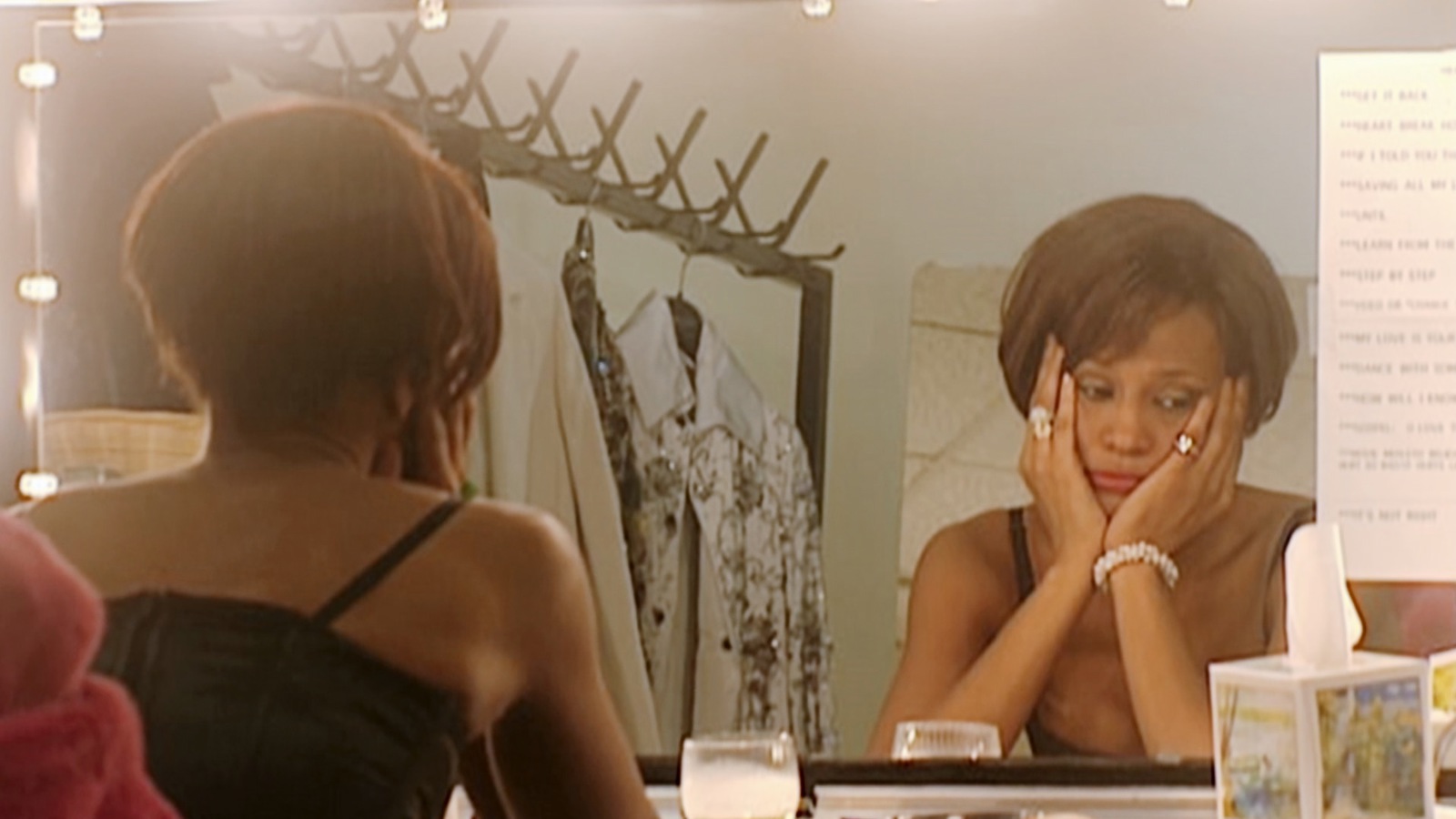They wither
before our gaze. If this week’s new documentary Whitney: “Can I Be Me?” is anything to go by, the cinema’s
obsession with the lives – and, more significantly, the premature deaths – of
doomed singers remains very much intact. Nick Broomfield and Rudi Dolezal’s
uncompromising account of the tragic demise of Whitney Houston (1963-2012)
follows close on the heels of a pair of 2015 releases detailing the downfalls
of other short-lived songbirds: Amy,
commemorating Amy Winehouse (1983-2011), and Janis: Little Girl Blue, on Janis Joplin (1943-1970). We might ask:
why this enduring fascination? Where does it come from? And isn’t it, on the
whole, a little morbid?
Historians
could tell us the cinema has never lacked for female martyrs: the lineage runs
from 1928’s silent The Passion of Joan of
Arc through Godard’s Vivre Sa Vie
to the heroines of Thelma & Louise.
It took just forty years for the movies to arrive at A Star is Born, and with it (and each subsequent remake) the idea
that the entertainment industry might provide an especially prominent arena for
such woes: within these circles, the women suffer not in the shadows, but the
spotlight, obliged to slap a smile over their pain and grief to ensure that the
show goes on. The star of 1954’s Star,
Judy Garland (1922-1969), knew this routine better than most.
Many familiar
tropes were established in this first wave of showbiz stories. These were women
at the mercy of male executive power, controlling lovers, and a press slavering
to eat them alive. Yet they’ve re-entered circulation with the recent wave of
music documentaries, reminding us how popular fictions are often rooted in
stark fact. There are technical explanations for this wave – the growth of
“event cinema” and Dolby sound systems capable of reproducing the live
experience, BBC4’s Friday night scheduling – but it boils down to audience and
filmmaker curiosity: we want to know why
these women were consumed, in the hope the answer might bring us closer to them
– or spare the lives of others.
And so there
was Amy, the breakout hit that
launched a mini-genre, much as director Asif Kapadia’s previous Senna fuelled several movies about men
speeding towards their grave. Amy was
elevated by the acute sensitivity it displayed around its subject: Kapadia
acknowledged Winehouse’s dependency issues, and recognised that this volatile
mix of bad choices and impulses was partly responsible for the art that came
out of this brief and troubled life, but he framed that art as though in the
context of a memorial concert or vigil. A documentary thus became part of a
process that allowed its audience to grieve while reminding us how lucky we
were to have witnessed such a singular talent.
Whitney, by contrast, fades down its
subject’s ebullient music to sound out some dark behind-the-scenes struggles.
Broomfield, the investigator behind 1998’s Kurt
& Courtney and 2002’s Biggie and
Tupac, spends these ninety-odd minutes uncovering copious evidence of
Houston’s low self-esteem, a personality flaw compounded by claims of nepotism
and musical inauthenticity, and the philandering of hubby Bobby Brown. That it
is a far tougher watch than Amy can
be attributed to its unblinking study of Houston’s more questionable choices:
there’s a grim irony in hearing that the star of The Bodyguard fired her own minder after he raised concerns the
singer had fallen in with the wrong crowd.
Of course, there
have been exceptions to this rule: no-one would pick up a guitar or enter a
recording booth otherwise. 2013’s stirring The
Punk Singer detailed how indie queen Kathleen Hanna negotiated both
constitutional and institutional challenges to raise a whole new generation of
riot grrls aloft on her shoulders; 2015’s Mavis!,
a homage to soul survivor Mavis Staples, was jubilatory enough to merit that
exclamation mark. That we have an upcoming portrait of Grace Jones to look
forward to similarly underlines that it is still possible for female creatives
to pass through the showbiz machine with artistic credibility and lifeforce
intact – though they may have to be hard as nails with it.
What these
films have in common, ultimately, is emotion – perennial raw material of great
cinema. These women channelled it more nakedly and candidly than others,
perhaps: they wore their hearts defiantly on their sleeves, even as it left
them open to bruising and worse. It’s a solitary Amy in the studio, tentatively
laying down “Back to Black” in the wake of another break-up with Blake; it’s
Whitney retreating to her dressing room and zoning out before the mirror. For
all their success, such moments reveal these icons as vulnerable indeed, as
alone in their thoughts and feelings as we are sitting in the Odeon. We,
however, have the luxury of the dark, where no-one can see our tears.
Whitney: "Can I Be Me?" is now playing in selected cinemas.

No comments:
Post a Comment